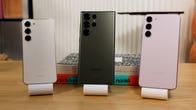This story is part of Samsung Event, CNET’s collection of news, tips and advice around Samsung’s most popular products.
With the Galaxy S23 and S23 Plus, Samsung is prioritizing practical improvements that could make doing your daily tasks more convenient, rather than making sweeping changes. The two new phones made their debut last week alongside the Galaxy S23 Ultra and a new Galaxy Book at Samsung’s Unpacked event in San Francisco. The Galaxy S23 and S23 Plus bring a slew of upgrades, including larger batteries, better selfie cameras and a slightly updated design, while the Plus model also has twice as much storage.
The Galaxy S23 starts at $800 (£849, AU$1,349), while the larger Plus begins at $1,000 (£1,049, AU$1,649). Both devices launch on Feb. 17, with preorders beginning today. Those prices are similar to what Apple charges for the iPhone 14 lineup, which starts at $799 for the regular version and $999 for the Pro. The launch also comes as Google has been undercutting Samsung on price with its recent Pixel phones, which start at $599 for the Pixel 7 and $899 for the Pixel 7 Pro.
The new pair of phones include incremental updates compared to the Galaxy S22 lineup. But those upgrading from the Galaxy S21 or earlier will likely have a lot to gain from the S23’s improvements. It’s another sign that phone-makers are focusing more on standard, pragmatic updates for their entry-level premium phones rather than introducing radical changes. Apple took a similar approach with 2021’s iPhone 13, which featured longer battery life and more storage at the base level.
Both new phones have a battery that’s 200 mAh larger than the ones in last year’s devices, which amounts to a 3,900-mAh capacity for the S23 and a 4,700-mAh capacity for the S23 Plus. I hope this change makes for a significant improvement in battery life, since last year’s Galaxy S22 sometimes struggles to get through a day.

 \n ","topic":"","ttag":"","searchDim":"article-body|listicle|image","variant":"article-body|listicle|image","viewguid":"","event":"listicle|image|1","correlationId":"","_destCat":"https:\/\/www.samsung.com\/us\/smartphones\/galaxy-s23\/buy\/galaxy-s23-128gb-unlocked-SM-S911UZGAXAA\/","productName":"Samsung Galaxy S23 series","formatType":"IMAGE","location":"LIST","position":1,"sku":"","dwLinkTag":"article-body|listicle|image","selector":"#article-body #listicle-815d4a46-df43-458d-bdd3-862312249fc9 .itemImage","shortcodeId":"815d4a46-df43-458d-bdd3-862312249fc9","shortcodeType":"x-listicle","vendor":"Samsung","manufacturer":"","coupon":"","productPrice":"","quantity":""}}” rel=”noopener nofollow” target=”_blank”>
\n ","topic":"","ttag":"","searchDim":"article-body|listicle|image","variant":"article-body|listicle|image","viewguid":"","event":"listicle|image|1","correlationId":"","_destCat":"https:\/\/www.samsung.com\/us\/smartphones\/galaxy-s23\/buy\/galaxy-s23-128gb-unlocked-SM-S911UZGAXAA\/","productName":"Samsung Galaxy S23 series","formatType":"IMAGE","location":"LIST","position":1,"sku":"","dwLinkTag":"article-body|listicle|image","selector":"#article-body #listicle-815d4a46-df43-458d-bdd3-862312249fc9 .itemImage","shortcodeId":"815d4a46-df43-458d-bdd3-862312249fc9","shortcodeType":"x-listicle","vendor":"Samsung","manufacturer":"","coupon":"","productPrice":"","quantity":""}}” rel=”noopener nofollow” target=”_blank”>
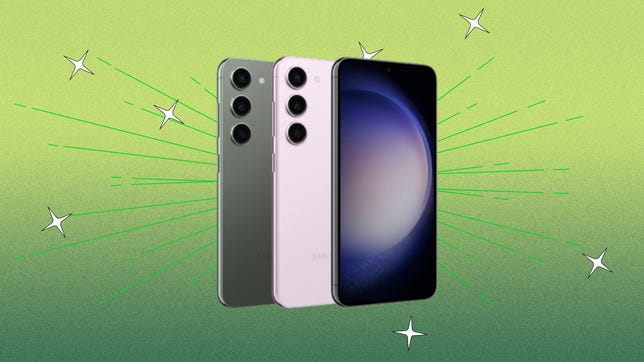

Samsung/CNET
Samsung’s all-new Galaxy S23 flagship lineup is now available to preorder with devices beginning shipping on Feb 17. You can save on the latest devices with several Galaxy S23 preorder deals already available at Samsung, Best Buy and elsewhere.
Even though it’s a small update, it’s one that I think people will appreciate — as long as the change in battery life is actually noticeable. A 2018 survey from YouGov America found that 41% of respondents chose battery life as the top feature they wanted in a new phone. Charging speeds remain the same, with the Galaxy S23 supporting 25-watt wired charging and the S23 Plus capable of up to 45-watt speeds.
The Galaxy S23 and S23 Plus are available in the same sizes as last year: 6.1 inches for the S23 and 6.6 inches for the S23 Plus. The base model of the Galaxy S23 Plus has more storage, now beginning at 256GB instead of S22 Plus’ 128GB starting capacity. The regular S23 still starts at 128GB of storage.
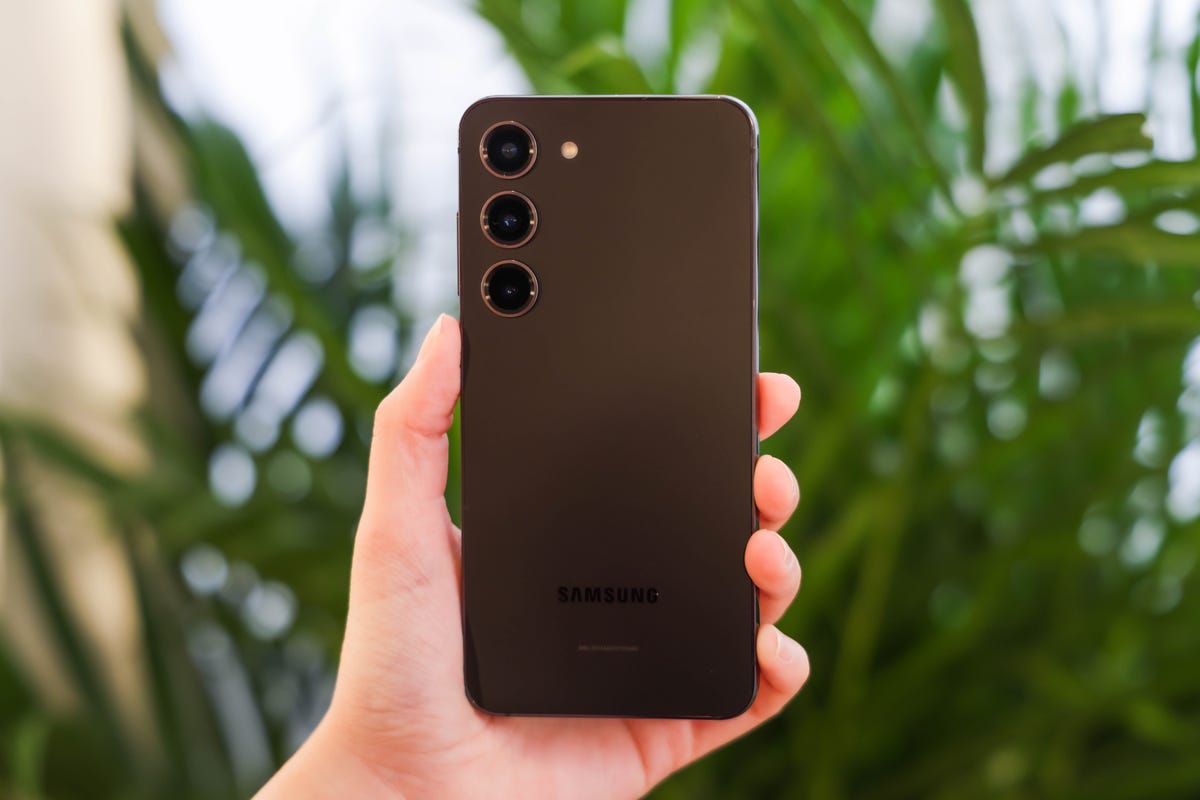

Samsung’s Galaxy S23 boosts its storage size without raising the price.
Bobby Oliver/CNETWhen I reviewed the Galaxy S22 Plus last year, I wrote that it was my favorite phone in the trio because it strikes a great balance of providing a large screen and longer battery life without feeling overwhelming. It’s nice to see Samsung give the Plus model more attention by further distinguishing it from the regular version.
The phones generally look similar to last year’s devices, until you flip them over and notice that the camera bump is gone. Instead, Samsung has implemented the same floating camera lens design as the Ultra model, which creates a little more consistency throughout the line. All three phones come in the same four colors: black, cream, green and lavender.
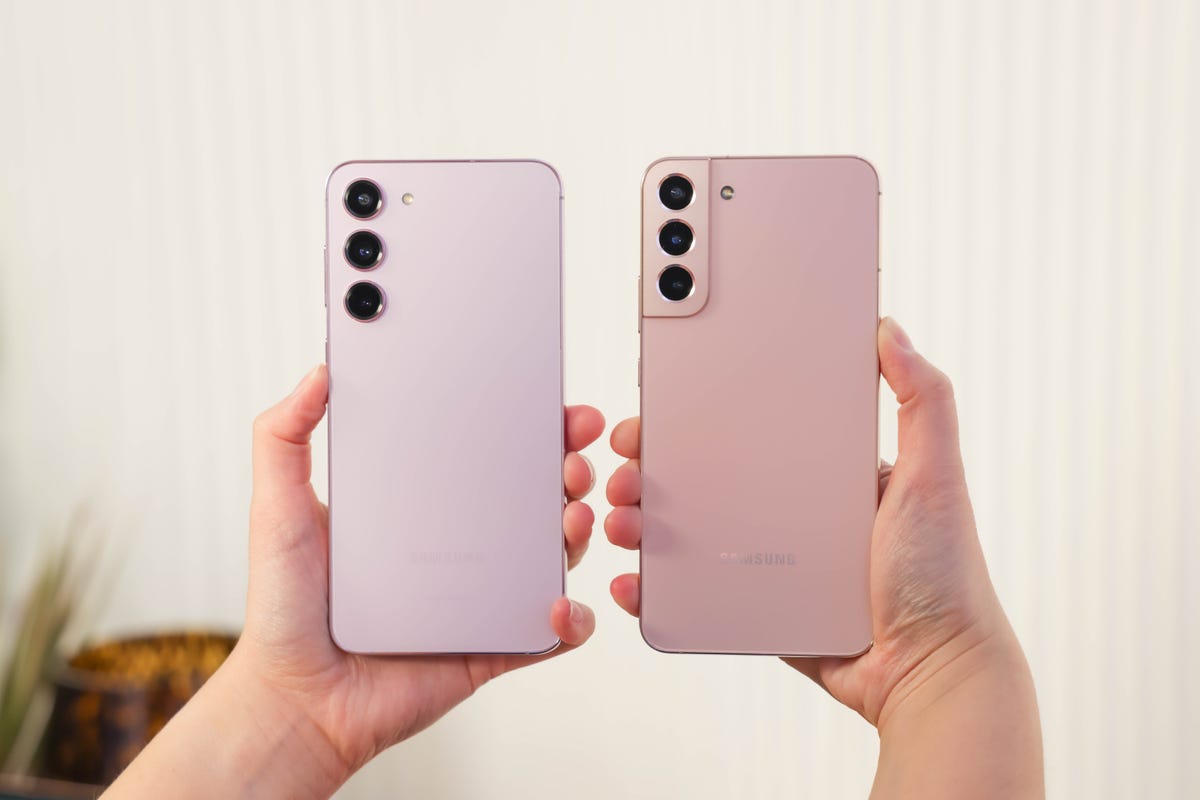

From left: The Galaxy S23 Plus alongside the Galaxy S22 Plus.
Bobby Oliver/CNETThe Galaxy S23 and S23 Plus’ camera hardware is largely the same as last year’s phones. There’s a 50-megapixel main camera, 12-megapixel ultrawide and 10-megapixel telephoto. Samsung says it’s made some under-the-hood improvements that should increase dynamic range and other capabilities like glare reduction. The new phones get a new 12-megapixel selfie camera that should be better at identifying objects in frame and optimizing the image accordingly.
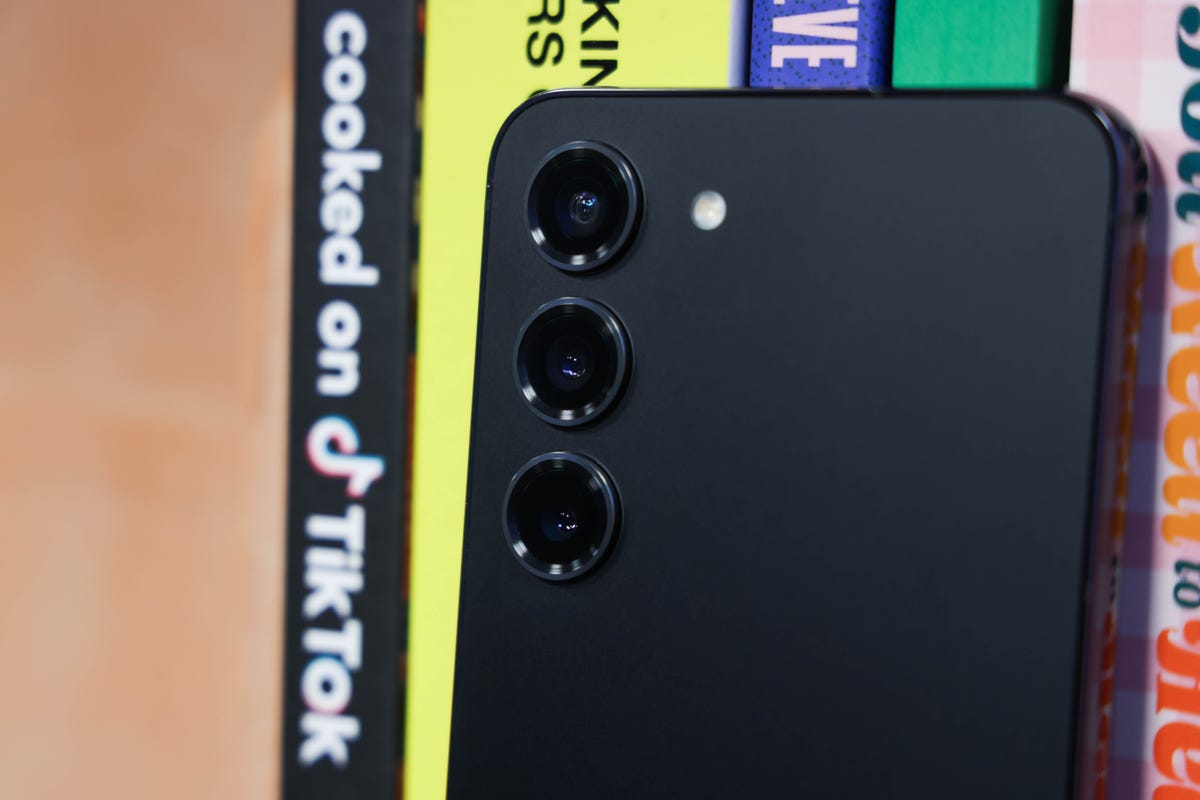

The Galaxy S23’s camera.
Bobby Oliver/CNETThat upgraded selfie camera is thanks in part to the new Qualcomm Snapdragon 8 Gen 2 chip found inside the S23 lineup, which is responsible for some of the S23’s photo-processing enhancements. All three S23 series phones run on a customized version of the processor that Samsung said has been optimized for faster performance. It’s a unique version of the chip that is distinct from the one we’ll see in rivals like the OnePlus 11 5G.
The launch comes as smartphone upgrades have begun to feel less monumental than in years past. The Galaxy S23’s upgrades in total feel like practical changes rather than groundbreaking ones. That continues a theme we saw throughout 2022, as companies such as Apple, Google and Samsung prioritized factors like privacy, safety and longevity in their new products. The S23 Ultra, on the other hand, is getting a more substantial upgrade to a new 200-megapixel camera, although we’ll have to try it before we know how much of a difference it makes.
Overall, the Galaxy S23 and S23 Plus seem like small but important steps forward for Samsung’s smartphone lineup. These phones are likely best suited for Android fans upgrading from a phone that’s at least two years old, but we’ll know more once we’ve had the chance to review them.
Samsung Galaxy S23 lineup specs compared
| Galaxy S23 | Galaxy S23 Plus | Galaxy S23 Ultra | |
|---|---|---|---|
| Display size, tech, resolution, refresh rate, brightness | 6.1-inch AMOLED; 2,340×1,080 pixels; 120Hz Adaptive Refresh Rate; 1,750 nits | 6.6-inch AMOLED; 2,340×1,080 pixels; 120Hz Adaptive Refresh Rate; 1,750 nits | 6.8-inch AMOLED 3,088×1,440 pixels; 120Hz Adaptive Refresh Rate; Edge Screen; 1,750 nits |
| Pixel density | 425 pixels per inch | 393 pixels per inch | 500 pixels per inch |
| Dimensions (inches) | 2.79 x 5.76 x 0.3 in | 3 x 6.21 x 0.3 in | 3.07 x 6.43 x 0.35 in |
| Dimensions (millimeters) | 70.9 x 146.3 x 7.6 mm | 76.2 x 157.7 x 7.6 mm | 78 x 163.3 x 8.9 mm |
| Weight (ounces, grams) | 168 g (5.93 oz) | 196 g (6.91 oz) | 234 g (8.25 oz) |
| Mobile software | Android 13 | Android 13 | Android 13 |
| Camera | 50-megapixel (wide), 12-megapixel (ultrawide), 10-megapixel (telephoto) | 50-megapixel (wide), 12-megapixel (ultrawide), 10-megapixel (telephoto) | 200-megapixel (wide), 12-megapixel (ultrawide) 10-megapixel (telephoto) 10-megapixel (telephoto) |
| Front-facing camera | 12-megapixel | 12-megapixel | 12-megapixel |
| Video capture | 8K at 30fps | 8K at 30fps | 8K at 30fps |
| Processor | Galaxy-optimized Qualcomm Snapdragon 8 Gen 2 | Galaxy-optimized Qualcomm Snapdragon 8 Gen 2 | Galaxy-optimized Qualcomm Snapdragon 8 Gen 2 |
| RAM/storage | 8GB RAM + 128GB; 8GB RAM + 256GB | 8GB + 256GB; 8GB + 512GB | 12GB + 256GB; 12GB + 512GB; 12GB + 1TB |
| Expandable storage | None | None | None |
| Battery/charging speeds | 3,900 mAh (25W wired charging) | 4,700 mAh (45W wired charging) | 5,000 mAh (45W wired charger) |
| Fingerprint sensor | In-display | In-display | In-display |
| Connector | USB-C | USB-C | USB-C |
| Headphone jack | None | None | None |
| Special features | 5G (mmw/Sub6), IP68 rating, faster wired charging, wireless PowerShare to charge other devices | 5G (mmw/Sub6), IP68 rating, faster wired charging, wireless PowerShare to charge other devices, UWB for finding other devices | 5G (mmw/Sub6), IP68 rating, faster wired charging, wireless PowerShare to charge other devices, integrated S-Pen, 200x Space Zoom, 10x Optical Zoom, UWB for finding other devices |
| US price off-contract | $800 (8GB/128GB) | $1,000 (8GB/256GB) | $1,200 (12GB/256GB) |
| UK price | £849 (8GB/128GB) | £1,049 (8GB/256GB) | £1,249 (12GB/256GB) |
| Australia price | AU$1,349 (8GB/128GB) | AU$1,649 (8GB/256GB) | AU$1,949 (12GB/256GB) |
